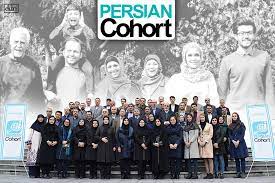The Persian Cohort Study

Complete achievement of the goals in the Golestan Cohort Study prompted a new effort, which was the formation of a large, prospective, population-based study with the collaborative participation of medical universities on a population of 200,000 Iranian from all races and ethnicities, named the Persian Cohort Study
Writer : Fereshteh Hashemi
The key role of Iranian scientists for the realization of Precision Medicine in the next 20 years is one of its important objectives.
Among research studies, a prospective population-based study (cohort study) is the most challenging, and yet, most effective type of study in the health care system of countries, and the best option for examining the course of disease, while estimating its burden, and ultimately, prevention, diagnosis and early treatment of the disease to reduce healthcare-related costs.
Prospective population-based studies (cohort) have been taking place in the United States and the United Kingdom since 60 years ago, and were later conducted in other European countries. After at least 30 years of follow-up, it has paved the way and supported evidence-based medicine to the extent that nowadays, the advances in genetics made during the past three decades, the applications of genetics and molecular biology, the recognition of environmental factors and healthy lifestyles from large-scale population-based studies conducted globally have provided a promising future known as precision medicine for decades to come.
In Iran, the history of cohort studies dates back to 1987. The first cohort studies were carried out in the provinces of Tehran, Isfahan and later in Golestan. The prospective cohort study of Golestan is the largest cohort study in the Middle East and North Africa which took place in the north-east region of Iran (Golestan) and was intended to identify the causes of cancers, especially upper gastrointestinal cancers, and most importantly, esophageal and stomach cancer. It followed more than 50,000 participants for 30 years, identifying 10 major causes of cancer and led to many national and international accomplishments in this area. It also led to major studies on other chronic non-chronic diseases which account for 80 percent of the disease burden in Iran.
The study produced tremendous achievements for the country, both in terms of creating scientific research infrastructures and a large compendium of medical information for researchers, as well as the provision of advanced diagnostic and therapeutic services to patients, and the introduction of preventative protocols / programs for chronic diseases. In addition, among its related outcomes which resulted from 20 years of scientific research included the development of Polly Pill for the prevention of heart attacks and strokes, and subsequently, the reduction of premature deaths in Iran, as well as Sovodak pills for the definitive treatment of all genotypes of Hepatitis
Complete achievement of the goals in the Golestan Cohort Study prompted a new effort, which was the formation of a large, prospective, population-based study with the collaborative participation of medical universities on a population of 200,000 Iranian from all races and ethnicities, named the Persian Cohort Study. The key role of Iranian scientists for the realization of Precision Medicine in the next 20 years is one of its important objectives. The most recent assessments in Iran indicate an increase in the share of non-communicable diseases within all age groups, and projections suggest the continuation of this trend. On the other hand, the Iranian health care system faces serious concerns regarding early mortality, which needs to be addressed in the context of large national cohort studies along with many important questions in the field of health and future medical research.

comment